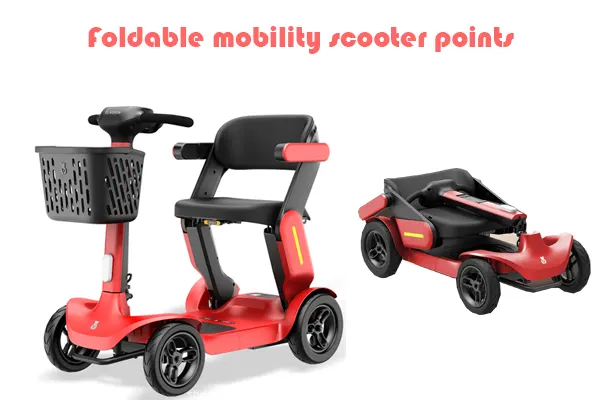What is a Mobility Scooter
A mobility scooter is a battery-powered, motorised personal transport device designed for people with limited mobility. They are engineered to provide supplementary assistance in manoeuvring around both indoor and outdoor spaces, making it easier for those with physical restrictions and mobility challenges to maintain independence.
Design and Structure
Mobility scooters typically consist of a comfortable, ergonomically designed seat mounted on a flat and stable platform. They have handlebars or steering tillers in the front, allowing the user to steer and control the scooter easily. The device is powered by a rechargeable battery and runs at a safe speed, ensuring that users feel both stable and secure while in motion. Mobility scooters are also equipped with brakes, lights, and turn indicators for added safety.
Functionality
The primary purpose of a mobility scooter is to enable users with mobility issues to travel conveniently both inside and outside their homes. These devices are available in different configurations, offering different top speeds, travel ranges, and manoeuvrability to accommodate various needs. Mobility scooters can be used on sidewalks, pedestrian areas, and sometimes even on roads.
Who Can Use a Mobility Scooter
Mobility scooters are suitable for individuals with various levels of mobility challenges, such as those with limited strength and stamina or those who have trouble walking or standing for extended periods. They are also excellent options for individuals with conditions like arthritis, multiple sclerosis, stroke recovery, or any ailment that hinders mobility. However, before deciding to use a mobility scooter, it is essential to consult with a healthcare professional to determine if it is the right choice based on your unique needs and abilities.
What is the Difference between a Mobility Scooter and a Scooter?
While mobility scooters and scooters may initially seem similar, they are quite different in both design and purpose.
Mobility Scooter
Purpose
Mobility scooters are designed to assist individuals with limited mobility in their daily life. They enhance independence and enable users to travel both indoors and outdoors with ease, tackling mobility challenges due to ageing, injury, or health conditions.
Design
Mobility scooters typically have a comfortable seat, mounted on a stable platform, with handlebars or a steering tiller to guide movement. They prioritise user comfort and are built with added safety features like brakes, lights, and turn indicators.
Speed
Since they are designed with safety and accessibility in mind, mobility scooters tend to have a lower top speed, usually ranging from 6.4 to 19.3 km/h (4 to 12 mph) depending on the model. They are optimised for comfort and safety, not high-speed travel.
Driving Controls
Mobility scooters are operated using simple and accessible control, usually situated on the handlebars. They are suitable for users with limited dexterity or hand strength.
Legality
Mobility scooters are legally classified as mobility aids and have specific rules and regulations governing their use, such as restrictions on road use, speed limits, and pavement accessibility. In many regions, mobility scooters do not require a driver’s licence, and they are subject to specific regulations regarding their use. In Australia, wheelchairs and scooters should be speed limited to 10 km/h on level ground.
Scooters
Purpose
Traditional scooters (like kick scooters and electric scooters) are designed primarily for recreation, commuting, or short-distance travel. They are mostly used by people without mobility issues, serving as a convenient means of personal transportation.
Design
Scooters usually consist of a platform on two or three wheels with a handle for steering. They have a more minimalistic build compared to mobility scooters and often lack the same level of added comfort, stability, and safety features.
Speed
Traditional scooters, especially electric scooters, tend to be faster than mobility scooters, with some reaching speeds up to 28 mph or higher depending on the model.
Driving Controls
Kick scooters are user-propelled, while electric scooters have throttle controls and occasionally a handlebar-mounted display with speed and battery status.
Legality
Traditional scooters, especially those with internal combustion engines, typically require a valid driver’s licence and must adhere to standard road traffic regulations.
CONTACT INFORMATION
- Xinyi.ouyang@ihktech.com
- +86 15323384821
- 910-A03,9th Floor, Building 9 (Building 8 #), No.6, Nanjiang Second Road, Zhujiang Street, Nansha District, Guangzhou
You May Like
Have Anything To Ask Us?
Please fill in the detailed information in the form, and we will contact you as soon as possible!





